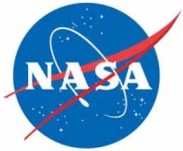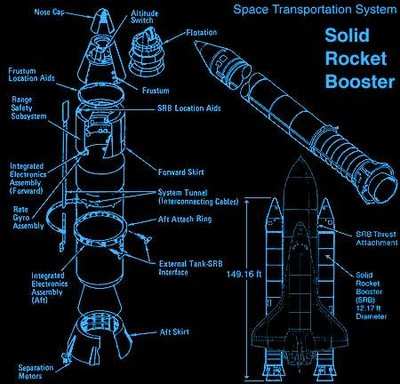Will Also Be Used For Ares Rockets
 NASA's Space Shuttle Program successfully fired a reusable
solid rocket motor Thursday, May 24, at a Utah test facility. The
space agency tells ANN the two-minute test provided important
information for continued shuttle launches, and for development of
the rocket that will carry the next human spacecraft to the
moon.
NASA's Space Shuttle Program successfully fired a reusable
solid rocket motor Thursday, May 24, at a Utah test facility. The
space agency tells ANN the two-minute test provided important
information for continued shuttle launches, and for development of
the rocket that will carry the next human spacecraft to the
moon.
The static firing of the full-scale, full-duration flight
support motor was performed at 1 p.m. MDT at ATK Launch Systems
Group, a unit of Alliant Techsystems Inc. in Promontory, UT where
the shuttle's solid rocket motors are manufactured.
The flight support motor, or FSM-14, burned for approximately
123 seconds, the same time each reusable solid rocket motor burns
during an actual space shuttle launch. The Reusable Solid Rocket
Booster Project Office at NASA's Marshall Space Flight Center in
Huntsville, AL manages these tests to qualify any proposed changes
to the rocket motor and to determine whether new materials perform
as well as those now in use.
"Full-scale static testing such as this is a key element of the
'test before you fly' standard and ensures continued quality and
performance," said Jody Singer, manager of the Reusable Solid
Rocket Booster Project, part of the Space Shuttle Propulsion Office
at Marshall.
Thursday's test provided data on numerous process, material and
design changes planned for shuttle solid rocket motors, including
obtaining performance data on a new low-temperature O-ring seal
material for improved sealing capabilities and a new nozzle liner
material and asbestos-free case insulation material.
The shuttle solid rocket motor firing also supports NASA's
future exploration goals to return humans to the moon. The test
provided data for development of the first stage solid rocket motor
for NASA's Ares I, the launch vehicle that will carry the Orion
spacecraft and its astronaut crew to Earth orbit. Engineers with
NASA's Exploration Launch Projects Office at Marshall, which
manages the Ares launch vehicles, will analyze motor-generated
external loads in support of continued Ares I design efforts. They
also will review the data gathered on the O-rings and
insulation.
Preliminary indications are that all test objectives were met.
After final test data are analyzed, results for each objective will
be published by NASA in a report available late this year.
The shuttle's reusable solid rocket motor is the largest solid
rocket motor ever flown, the only one rated for human flight and
the first designed for reuse. Each shuttle launch requires two
reusable solid rocket motors to lift the 4.5-million-pound shuttle.
The motors provide 80 percent of the thrust during the first two
minutes of flight. Each motor, just over 126 feet long and 12 feet
in diameter, generates an average thrust of 2.6 million pounds. It
is the primary component of the shuttle's twin solid rocket
boosters.

During a shuttle launch, the rockets take the shuttle to an
altitude of 28 miles at a speed of 3,094 mph before they separate
and fall into the ocean. Then they are retrieved, refurbished and
prepared for another flight.
Regular static-fire tests of the motors help maintain the
highest safety, quality and reliability standards of solid rocket
motors used for human spaceflight. Engineers conduct approximately
110,000 quality-control inspections on each motor designed for
flight.
 ANN's Daily Aero-Term (05.07.25): Terminal Radar Service Area
ANN's Daily Aero-Term (05.07.25): Terminal Radar Service Area ANN's Daily Aero-Linx (05.07.25)
ANN's Daily Aero-Linx (05.07.25) Classic Aero-TV: Anousheh Ansari -- The Woman Behind The Prize
Classic Aero-TV: Anousheh Ansari -- The Woman Behind The Prize NTSB Prelim: Bell 206B
NTSB Prelim: Bell 206B Airborne-NextGen 05.06.25: AF Uncrewed Fighters, Drones v Planes, Joby Crew Test
Airborne-NextGen 05.06.25: AF Uncrewed Fighters, Drones v Planes, Joby Crew Test




